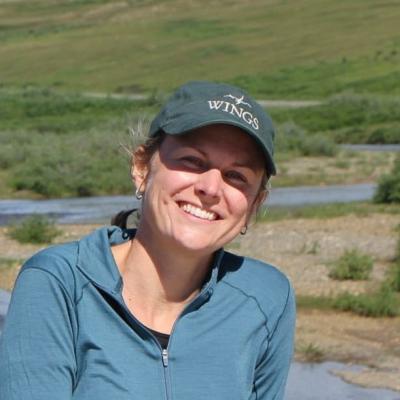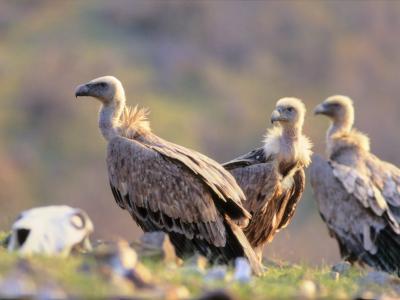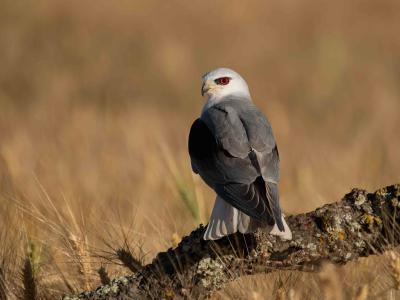Spain: Birding in the Land of the Lynx
-
Jan 10-19, 2026
Oli Reville and a local leader
-
Jan 2027
Oli Reville and a local leader
2026
Single Room Supplement $520
2027
Tour Price to be Determined
2026
Single Room Supplement $520
2027
Tour Price to be Determined
With a vast bird list, Spain is arguably Europe’s greatest country for birding and a wonderful experience for any bird seeking visitor. But to visit for just the birds would be to overlook the country’s iconic wildlife with an impressive range of mammal species including Iberian Lynx, the world’s rarest big cat, one of Spain’s greatest wildlife wonders and a major target on our tour.
We will of course also focus on Spain’s amazing birdlife, varied and magnificent in equal measure and including Marbled and White-headed Ducks, Great and Little Bustards, Black-bellied Sandgrouse, Spanish (Imperial) Eagle, Bearded and Cinereous Vultures, Iberian Magpie, Iberian Grey Shrike, Blue Rock-Thrush, and Black Wheatear.
We can expect about 175 bird species, breathtaking landscapes, and the chance to find and photograph one of the world’s rarest predators.
Day 1: The tour begins this evening with dinner and a discussion of our itinerary and related tour information. Night in Seville.
Day 2: We’ll visit the vast expanses of Brazo del Este, along the east bank of the Guadalquivir River and a birding paradise with a huge array of species on offer. We’ll make our first attempt to connect with species such as Marbled and White-headed Ducks, and Red-knobbed Coot. Waterfowl including Common Shelduck, Eurasian Wigeon, and Common Pochard are present here in winter months as is the ever-impressive Western Swamphen.
This is also an excellent area for raptors with Spanish (Imperial) Eagle, Hen Harrier, Merlin, and Black-winged Kite among the wintering and resident species. Wintering flocks of passerines such as Corn Bunting, European Goldfinch, and Spanish Sparrow should be in full flow around the agricultural fields, and in the vast expanse of wetlands, we’re likely to come across Zitting Cisticola, Western Marsh Harrier, Eurasian Spoonbill, Black Stork, and wintering shorebirds like Green Sandpiper, Black-tailed Godwit, Northern Lapwing, Pied Avocet, Black-winged Stilt, and Eurasian Thick-knee.
While in the area we’ll also explore other habitats including pine forest, freshwater lagoons, salt pans, and coastal marshes. Night in Seville.
Days 3-4: We’ll commit the next two days to finding the wonderful Iberian Lynx in world famous Doñana National Park, including on a nocturnal walk close to our hotel.
In-between looking for the lynx we’ll target key birds of the area including Ferruginous Duck, Greater Flamingo, Little Bittern, Eurasian Wryneck, Little Owl, and Spanish Sparrow. Nights in Villamanrique.
Day 5: We may begin with another search for Iberian Lynx before leaving Doñana, heading north to Extremadura and a very different set of birds. Key species here include raptors, such as Golden and Bonelli’s Eagles, Red Kite, and Eurasian Griffon and Cinereous Vultures. We’ll also look for montane passerines such as Black Wheatear, Blue Rock-Thrush, and Rock Bunting. Night in Llerena.
Day 6: We’ll travel east across the spine of Spain, where in its vast plains we’ll look for Great and Little Bustards, and Black-bellied Sandgrouse. The supporting cast of Northern Lapwing, Meadow Pipit, European Stonechat, Calandra Lark, Iberian Grey Shrike, and Eurasian Hoopoe should also be present. Later in the day we’ll continue east to the picturesque lowland mountains of Sierra de Andujar. Night in Andujar.
Days 7-9: Unless we are completely satisfied with our Iberian Lynx experiences, we’ll spend portions of two days hoping to improve on our sightings. We’ll enter private estates and have exclusive access to the best areas to spot lynx and our tour is timed with their breeding season when activity is at its highest.
We will of course be birding too with the mix of mountain and forest species found here including Eurasian Goshawk, Iberian Green Woodpecker, Iberian Magpie, Crested Tit, Red-billed Chough, Wood Lark, Eurasian Crag-Martin, Dartford Warbler, Short-toed Treecreeper, Mistle Thrush, Water Pipit, Hawfinch, and Eurasian Siskin.
We’ll take a day to journey east to the Cazorla Mountains. The star species here is the magnificent Bearded Vulture but while scanning for them we’ll keep our eyes open for Carrion Crow, Redwing, Red Crossbill, Coal Tit, Common Firecrest, Ring Ouzel, Black Redstart, Brambling, Grey Wagtail, Cirl Bunting, and Great Spotted Woodpecker. Nights in Andujar.
Day 10: We’ll drive to Seville airport where about midday our tour concludes.
Note: The information presented here is an abbreviated version of our formal General Information for Tours to Southern Argentina. Its sole purpose is to give readers a sense of what might be involved if they take this tour. Although we do our best to make sure that what follows here is completely accurate, it should not be used as a replacement for the formal document which will be sent to all tour registrants, and whose contents supersedes any information contained here.
ENTERING SPAIN: U.S. citizens will need a passport valid for at least three months beyond your scheduled date of departure from the country, and with at least one blank page for an entry stamp. A visa is not required for stays of fewer than 90 days. Citizens of other nations should contact the nearest Spanish Consulate for entry requirements.
It is always a good idea to take a photocopy of your passport and air ticket with you when traveling abroad. They can prove invaluable in helping you get replacements if your originals are lost or stolen. Obviously you should keep the photocopies in a separate bag to the originals.
COUNTRY INFORMATION: You can review the U.S. Department of State Country Specific Travel Information at https://travel.state.gov/content/travel/en/international-travel/International-Travel-Country-Information-Pages/Spain.html
Review foreign travel advice from the UK government here: https://www.gov.uk/foreign-travel-advice and travel advice and advisories from the Government of Canada here: https://travel.gc.ca/travelling/advisories
PACE OF THE TOUR: This is a fairly relaxed tour: leisurely walking, only occasionally over moderately rough or steep terrain, is the only physical requirement. Despite covering a relatively large area of Spain we do not anticipate any especially long drives, with the maximum in one hit being about 2 hours. However, there will be early starts on one or two days. On most days, we will have breakfast before heading out for the day with an optional pre-breakfast walk in some locations. Lunch is either a leisurely picnic or sometimes in a café en route to our next birding location. There are normally daily morning stops for tea, coffee or a cold drink. We usually return to the hotel at around 7:30 p.m. Breakfasts and dinners are usually taken late in Spain with several of our hotels not serving dinner before 8:30 p.m.
Virtually all the walking is fairly easy and on good paths or tracks. There are a couple of longer walks of about 1.5 miles each.. Most of the birdwatching is done within a short distance of our vehicle.
CLIMATE: Temperatures on this tour will vary due to the range of habitats we will cover. Low lying coastal areas will see temperatures reach up to 74°F (23°C). Our visits to mountainous areas later in the tour will see temperatures reduce with early mornings being as low as 32°F (0°C) and daily maximums around 50°F (10°C). However, sunshine should be plentiful and does retain strength so please remember sunblock for this tour. January is typically a dry month in this part of Spain and we shouldn’t see any significant rainfall. However please remember warm clothes and a waterproof jacket and trousers would be useful in case of inclement weather.
ACCOMMODATION: The tour stays at a number of hotels all of which have private bathroom facilities. Some have balconies and many have good views of the Spanish countryside with birdwatching right on the doorstep.
FOOD: Breakfasts are quite varied but with the usual staple items e.g. coffee, tea, juice and toast or pastries found at most of the hotels. The further inland we travel the more local delicacies such as cheese and smoked meats appear on the breakfast menu. Lunch will often be a picnic, (provided by our guide/s), which will include a selection of fresh bread, fruit and vegetables, cheese, cold meats, olives, etc. Alternatively we have tapas-style lunches at local bars. Evening meals are taken late in Spain (usually 8:30-9:00 p.m.) which allows us to make the most of the daylight hours for birding. WINGS tours are all-inclusive and no refunds can be issued for any missed tour meals.
TRANSPORTATION: Transportation will be by minibus driven by the leader. The leader will arrange a seating rotation. Participants should be willing and able to ride in any seat in tour vehicles.
Maximum group size 10 with two leaders.



















